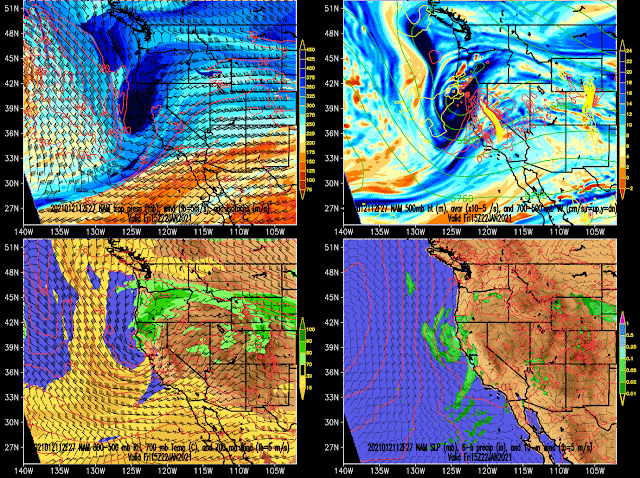As I write this, dawn is breaking on the final day of January, which promises to be the nicest weather day of the winter so far with our deepest snowpack, fresh snow (although probably tracked out in resort terrain that was open yesterday), and bluebird skies.
Sadly, it sounds like there was another fatality yesterday in the backcountry adjacent to the 9990 chair at Park City Mountain Resort. We have talked previously about the high frequency of fatalities there and some of the heuristic traps that contribute to them (see The Lure of Dutch Draw). Today has all the hallmarks of the type of day that causes skiers to push it into steeper terrain with fresh snow, beautiful weather, and a season of pent-up powder frustration. Don't let Powder Fever cloud your judgement.
We have another shot at a major winter storm Tuesday night and Wednesday associated with an upper-level trough passage within large-scale northwesterly flow. Below is the GFS forecast valid 5 PM MST Wednesday afternoon.
There have been ongoing problems with the NWS server that provides us with much of the data we use at weather.utah.edu. I've been able to rewrite code to get the GFS and NAM from other sources, but haven't had time to do so for our downscaled ensemble products (it's not as simple as just changing the server name). I really miss those as they allow me to quickly and easily assess event likelihoods for specific locations. For this next storm, I'm just going to say keep your fingers crossed. Snow-sports enthusiasts and hydrologists agree we need more snow.
Some have asked me if I think this could be a "Steenburgh Winter", defined by me to be a winter during which we reach a 100" snow depth at Alta-Collins by February 10. Currently we sit at 72" at Alta-Collins, although I would expect that to settle back into the 60s before the next storm.
I think it's pretty unlikely, but not impossible, if things later this week totally went off, but I also don't think even if we were to get there that there's any making up for the slow start to this season. I'm just glad that things are finally improving.



















































